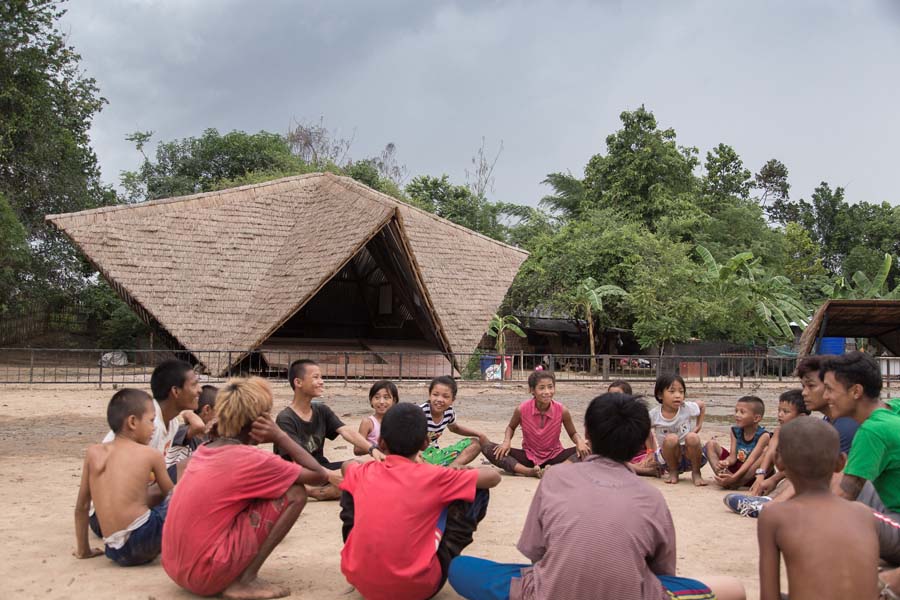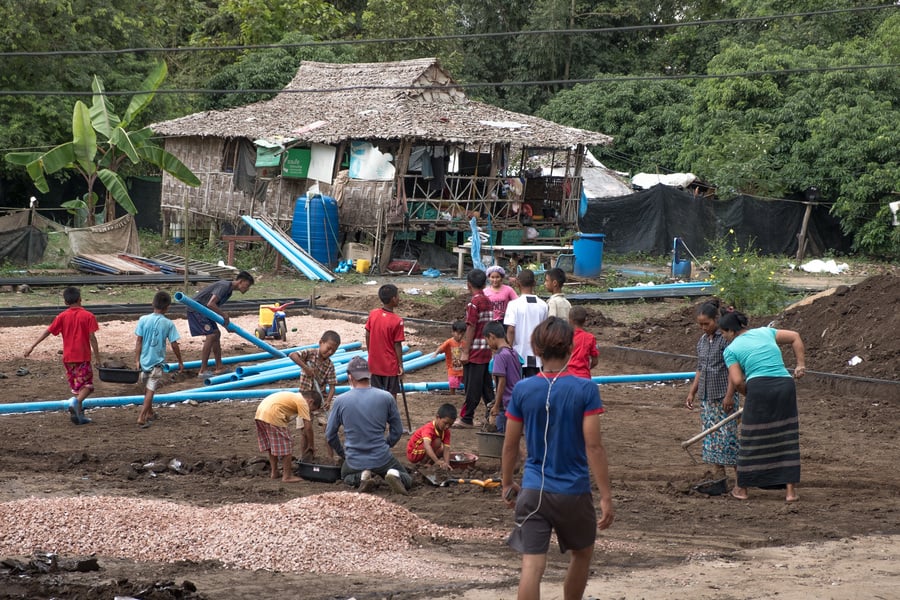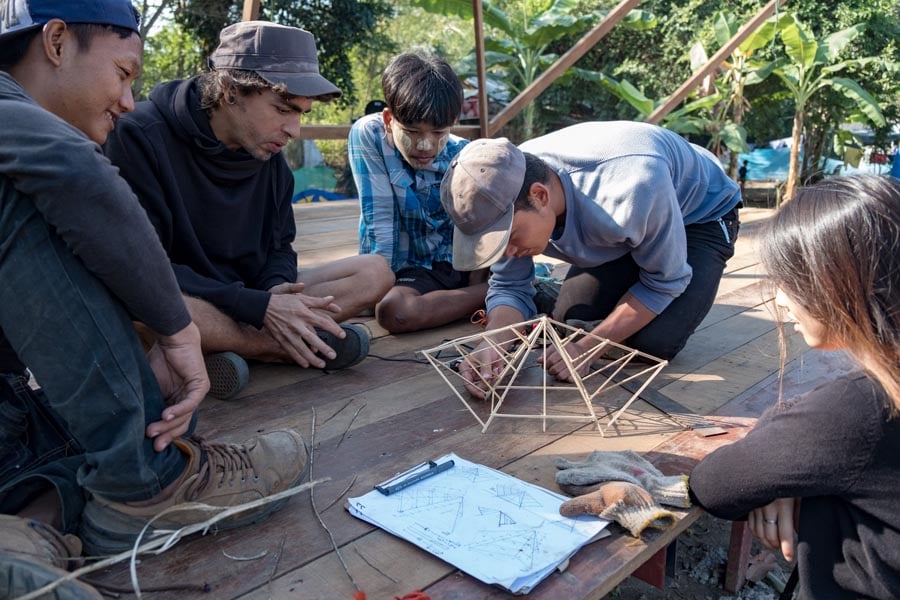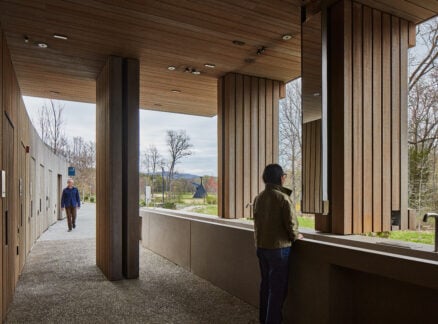
September 25, 2019
At the Thai-Burma Border, a Garbage Dump Transforms Into a Bustling Community Center
Estudio Cavernas trains Burmese migrants to sustainably construct their own community center at the heart of a municipal waste site.

Myanmar has seen it all: genocide, war crimes, human trafficking—the list goes on. While the Rohingya people have fled the country to escape violent conditions, other Burmese are similarly seeking an exit, many of them turning to neighboring Thailand for refuge. A major crossroads for migration in Southeast Asia, Thailand hosts an immigrant population of 4.9 million, 600,000 of which are registered Burmese workers. It’s likely that there are even more who are working there illegally.
In Mae Sot, Thailand, about five kilometers from the Thai-Burma border, lies a garbage dump and a settlement of nearly 400 Burmese refugees and migrants. The community spends their days collecting recyclables—mostly plastic, wire, or glass—for nominal profit. Due to a lack of proper education, early marriages and teenage pregnancy are not uncommon.
For Estudio Cavernas, a social architecture nonprofit, designing and constructing a community space in the middle of this municipal waste center was a clear step in revitalizing the area. In collaboration with PlayOnside, a local sports organization, and a grant from Siemens Gamesa Renewable Energy, Estudio Cavernas was able to turn an inhospitable, polluted site into the Green Island Community Center—a vibrant site with classrooms, a football/soccer field, and a vegetable garden.

Clearing the trash, they say, was the first step towards realizing the center. “We had a lot of people from the community to help clean the area,” explains Juan Cuevas, cofounder of Estudio Cavernas. “The only reason why it worked was because we’ve been working with people from the community for more than two years now, and we were able to gain their trust.” From there, they built a road to transport the materials, all of which were locally sourced to support community businesses—from the eucalyptus sticks for the roof to the gravel for the field.
The origami-like structure, made of reclaimed timber, features large openings on three sides to allow cross ventilation and natural light. To combat the extreme weather conditions in the area, the southwest face is shielded with teak trees. The thatched roof consists of an inner layer of Aluzinc and a middle layer of vertically placed eucalyptus—a move that helps prevent excessive heat radiation from the roof by promoting air flow—topped with a sugarcane thatch. The building is also elevated to avoid water damage during monsoon season, and features a drainage system to further mitigate flooding. “Every aspect of the design had to be intentional because we didn’t have a huge budget and because our resources were very limited,” Cuevas tells Metropolis.

Estudio Cavernas and PlayOnside had similar goals in mind for the Green Island: to foster education and to empower the community. Estudio Cavernas worked closely with the locals to train them on sustainable construction principles and techniques, which were applied when building the center. Once the project was completed in 2019, PlayOnside provided educational support, launching a soccer program for children. In addition to offering recreational opportunities for locals, PlayOnside promotes a culture of gender equality by encouraging girls to be an active part of the community. “In Myanmar, public spaces are usually more oriented toward men,” explains Cuevas. “[PlayOnside] made it very clear from the beginning that this is a space that everyone can use.”
Nearly 30 families felt safe enough in this area to have built their own homes nearby, establishing their own identity and belonging in Mae Sot. “This was something we didn’t expect. It happened organically, like most of the things in our project,” remarks Cuevas. “I saw everything we planned on paper and these ideas coming into practice. For me, it was the most fulfilling thing I’ve ever done.”
You may also enjoy “Can a Soccer Stadium Full of Trees Change How We See Nature?”
Would you like to comment on this article? Send your thoughts to: [email protected]










